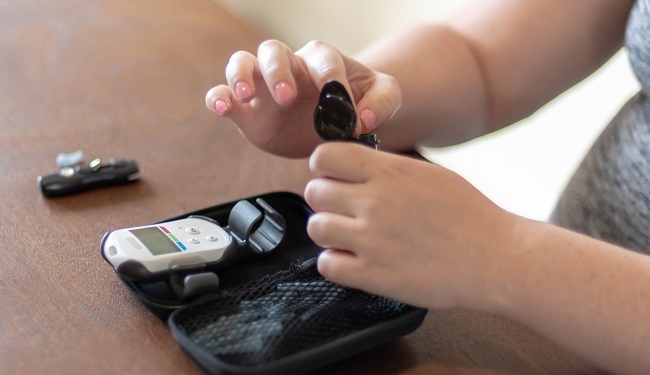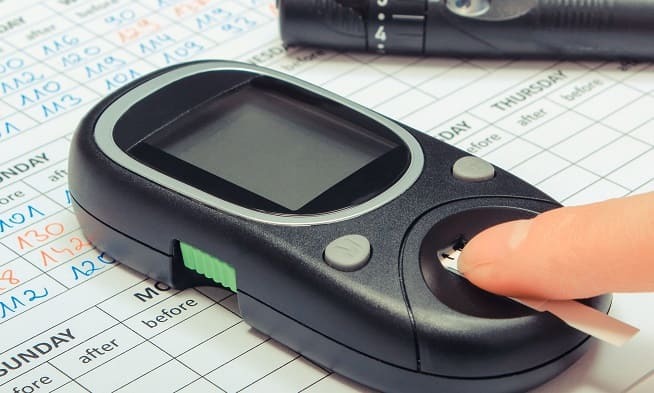
 Data Structure
Data Structure Networking
Networking RDBMS
RDBMS Operating System
Operating System Java
Java MS Excel
MS Excel iOS
iOS HTML
HTML CSS
CSS Android
Android Python
Python C Programming
C Programming C++
C++ C#
C# MongoDB
MongoDB MySQL
MySQL Javascript
Javascript PHP
PHPPhysics
Chemistry
Biology
Mathematics
English
Economics
Psychology
Social Studies
Fashion Studies
Legal Studies
- Selected Reading
- UPSC IAS Exams Notes
- Developer's Best Practices
- Questions and Answers
- Effective Resume Writing
- HR Interview Questions
- Computer Glossary
- Who is Who
What is the full form of GTT?
Introduction
Glucose Tolerance Test (GTT) determines how well your body can metabolize glucose. Your body requires glucose, a specific form of sugar, to fuel its cells. The food you eat is converted by your body into glucose, which then reaches your bloodstream.

Your pancreas produces the hormone insulin, which aids in delivering bloodstream glucose to your body's cells. The amount of sugar in your blood will be too high if your body's cells are unable to receive insulin, a condition known as resistance to insulin, or if your body is unable to create enough insulin.
High blood sugar levels may indicate diabetes or prediabetes. If left untreated, hyperglycemia is a life-threatening illness that can harm the body's tissues and organs. The glucose tolerance test can be performed in conjunction with other tests to detect and verify prediabetes and diabetes by determining how your system absorbs glucose.
Purpose of GTT
Finding the cause of health changes that you or your doctor may have noticed is the process of diagnosing prediabetes and diabetes. If you have diabetic symptoms or signs, your doctor may perform a glucose tolerance test, particularly if other diabetes tests come back negative.
Diabetes and prediabetes evaluation − Evaluation is the process of looking for diseases before they manifest as symptoms. If you are over 45 years old or have a higher-than-average risk of developing the condition, your doctor could recommend that you get tested for diabetes. The glucose tolerance test is less frequently used for screening than various other kinds of diabetes tests. However, screening for diabetes in pregnant women typically uses the glucose tolerance test.
Gestational diabetes − is a type of diabetes that can appear in women when they are pregnant, and it can be detected and treated. Your doctor might advise this testing if you're expecting
Preparation for GTT
Before the test, you must go without food for at least eight hours. You must therefore refrain from eating or drinking anything than water. The majority of your fasting can be completed while you sleep the day before because tests are frequently scheduled for the morning.
Until you start fasting, you may usually stick to a regular diet. In the three days leading up to your glucose tolerance test, your doctor might advise you to make sure you eat 150 grams or more of carbohydrates every day.
Before the test, make sure to discuss any prescription or over-the-counter medications you are taking with your doctor. If any of these could affect the test's outcomes, your doctor will be able to let you know. If you need to discontinue taking any drugs while you are fasting, they may advise you on that. In the days preceding your glucose tolerance test, carefully follow the preparation instructions provided by your doctor to get the most accurate results.
Procedure of GTT
This is how the GTT works −
First, a baseline or zero-time blood sample is taken.
Then a precise amount of glucose solution is administered to the patient for drinking.
Following that, blood samples are taken at scheduled times to test the levels of insulin and, in certain situations, blood sugar. The doctor may ask for a blood sample, which could need a maximum of six hours of testing.
Interpretation of GTT Results
A medical examination known as a glucose tolerance test (GTT) is performed to ascertain how efficiently your body can process glucose, a type of sugar that serves as the main fuel source for your cells.

The GTT involves consuming a solution having a predetermined amount of glucose, followed by periodic blood sugar measurements to assess how well your body can utilize the glucose. Diagnoses for illnesses like diabetes, prediabetes, and gestational diabetes can be made using the findings of a GTT.
After consuming the glucose solution in a typical GTT, your blood sugar levels will increase and then quickly return to normal. Your body's capacity to metabolize glucose may be impaired, such as by diabetes or prediabetes, if your blood sugar levels remain elevated or fail to return to normal within a few hours.
It's crucial to remember that the precise outcomes of a GTT can change based on the precise test being performed and the precise instructions being followed. Your healthcare professional will be able to decipher the meaning of your GTT results and give you more details.
Conclusion
Different kinds of diabetes can be diagnosed using the oral glucose tolerance test. You'll consume a beverage throughout the test that contains sugar (glucose). You will be observed and evaluated during the ensuing several hours to determine how your body responds to the sugar. The test's results can help your doctor identify whether you have diabetes and ensure that you receive the proper care.
FAQs
Q1. What makes a 6-hour test different from a 2-hour GTT?
Ans: Diabetes is diagnosed with a two-hour GTT, but a six-hour test may potentially reveal hypoglycemia because symptoms of hypoglycemia start to manifest after the fifth hour. Not only are blood glucose levels crucial for diagnosing hypoglycemia, but the test subject must also exhibit the condition's symptoms.
Q2. What will happen if someone didn't fast during the GTT?
Ans: What you must do is To avoid fasting and being unable to finish the test owing to business, schedule your GTT visit at pathology before the day. – If you haven't fasted properly or have been ill during the test, let the pathology team know right once because this will alter the outcome of the test.
Q3. Why is glucose efficacy critical during a GTT?
Ans: Even in the absence of insulin action, the mechanism of glucose effectiveness is adequate to correct the rise in blood sugar that happens during a GTT. According to estimates, 40% of glucose disposed of during a GTT 8 in slim, healthy humans is due to glucose effectiveness.

